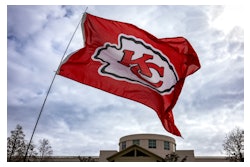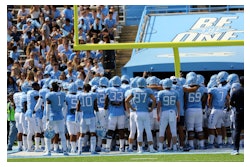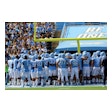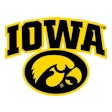Certainty about the local marketplace can determine the success or failure of a health club before it even opens its doors.

The club industry has been described with many different terms-including capital-intensive, service- or retail-oriented, and sometimes illiquid and unpredictable. The bottom line, however, is that it is chiefly a real-estate business, and although many factors may affect a club after it opens, the real-estate component is the single biggest determinant of club success.
The location of a club is significant because the club industry is a marketdriven business. When the decision to join is being made, customers want to know that the site will be convenient for them to travel to several days per week. If a market for a club is fundamentally insufficient, no extra amount of service, equipment or facilities can overcome the handicap of its poor location. Even extra marketing dollars cannot solve an inherently weak market situation. If a club is not located near its targeted local population, then no discounted pricing or sharpshooting marketing vehicles can create an appropriate bottom line. The business is inherently flawed.
For example, there are clubs that have been located in sparse communities and built too big. The owners in these cases simply built more than their own market could sustain. In other situations, clubs have been erected in heavily competitive markets. If a proper analysis had been done at the outset, the club would have either never been built or it would have been created as a unique concept (that is, a small niche facility) within that market. The need for a market analysis is obvious.
In fact, even owners of existing clubs are conducting independent market analyses for all of the following reasons:
- the opportunity for a major expansion;
- the chance to develop a satellite facility;
- to meet a major change in local market demographics and the type of potential new members;
- to compete with the arrival of a major new competitor;
- a need to change a club's long-range plan.
Today, the methodology has become more precise. The challenge, though, is that the use of primary market research in a local community is only useful for qualitative reasons. It can help a club developer decide if a market might want a second or third aerobics or group exercise room, or a warm-water swimming pool in addition to an existing lap pool. It might help answer questions about desirable services, programs and club benefits. It is not, however, a predictor of future club success.
Primary research of local residents by telephone or in person is flawed, as there is no longitudinal study ever done that measures the number of enthusiastic interviewees who actually join the club at its outset. Without such predictive data and conversion rates-which consumer product companies have calculated in their industries-the primary research here has the main benefit of serving as qualitative data to help tweak the design and ingredients of a club. It does not determine the "go/no go" decision. Aclub needs a location that allows it to achieve all of its potential benefits without any accompanying detriments. The ideal location should have the following three basic elements:
Accessibility. Accessibility is obviously the most important. If a location is to be perceived by the local market as "convenient," it must be reachable from the targeted residential areas in a very timely manner. If a local resident lives nearby "as the crow flies" but cannot reach the club site because of the lack of direct roadways, then the site is imperfect. The definition of a market according to consumers has changed from the mileage definition of more than a decade ago to a drive-time measurement. If a prospective member believes that it takes too long for him to drive to the club, even if he may be within a five-mile radius, he is not part of that club's market. And roadways only get more congested as the years pass.
In the past, some clubs have benefited because of their proximity to major road arteries. In a few cases, state transportation departments have changed those arteries or exit points and directly damaged clubs' markets and their bottom lines.
Parking adequacy. Parking may often define a club's capacity quicker and more specifically than any local zoning or planning board. If members or prospects have to drive around a club's parking lot without finding a legal parking space, they may not even give the club a second chance. Even off-site, street parking may not save the day. And there are club members who regularly complain when they have to walk around the outside perimeter of the building because they can't find parking right in front of the club's entrance. Parking must be adequate both for a club's needs today as well as for its future needs. Often, simple compliance with the local zoning requirements may be insufficient for what the club truly needs as it reconfigures its space, goes through its growth cycle, keeps members longer per visit or offers new services and facilities. If there is inclement weather or the need to drop off children, parking issues become exacerbated. Also, parking at night must be deemed safe for all members and staff. Valet parking systems and even shuttle bus systems to off-site locations are generally unsatisfactory solutions.
Visibility. Visibility is the least critical of the three, but still desirable. Although the buying decision of a new member is less impulsive than in the past, there is value in the visibility factor. It may lead to a visit or at least a tour of the club and the opportunity to accept a guest pass to experience the club. It may serve as a constant reminder each time a prospective member drives by the club. Walk-in traffic still accounts for a large portion of a club's prospect base.
If visibility is lacking, then signage from major arteries to the specific site and actual club entrance becomes critical. If there is no visibility and an inability to gain legal permission for direct signage, then the club's marketing efforts must take on the responsibility of educating the prospective member about the club's location and benefits.
There are nine key lessons that club owners need to learn about the process of analyzing a potential club site:
1. Use an independent, professional firm. There is a science to studying a market today. A professional firm that has completed 400 to 500 market analyses for clubs is going to be more knowledgeable than one that has only done two or three. Some club owners did not know of such firms 10 or 15 years ago and had to rely on their own resources.
Even if a club is successful, no expertise has been developed to understand the real market conditions. Given the dollar amounts involved in even a small club start-up, the results can be devastating if each new club does not perform as well as its predecessor. Developers should never go forward unless a site is clearly feasible, but they sometimes rationalize the decision to proceed and lack the independent research to at least put up yellow flags. Club owners today can look back at this fundamental decision and realize that they cast the die themselves, and that they will not have the opportunity to move their clubs to different locations.
2. Define a unique club concept. If clubs are service businesses, they must relate to local market conditions. To do this, club owners must make an early decision as to what segment will be targeted. Owners recognize that they cannot serve all local residents effectively. There is no one club that has a medical emphasis that serves the family market well at the same time as the seniors, teens, corporate executives, youths aged 8-12, young married couples and so on. Club owners should work to make a club so unique that it will be defined as "one of one" in a category. Today, there are a plethora of "me-too" clubs that often describe themselves as what they are not, rather than what they intend to be.
3. Understand the supply/demand equilibrium point. Club owners need to be assured that a given site has a greater potential demand than supply (those already served by the existing facilities). If there were a greater supply of facilities and consumers already served, then the only solution for a future club's survival would be to lure existing members from competitive clubs. This is a rather fragile premise-there is no evidence that indicates that a new club can successfully woo away other clubs' existing members.
It is therefore incumbent on the club developer to know that there is excessive demand before moving ahead on a project. The common denominator to measure this equilibrium point is the number of regular adult users (not members). Adults are used because the club industry does not currently charge youths a meaningful fee for the use of a club. Rarely does a club depend on a substantial contribution from youth membership fees, and the final buying decision is made by the parents.
The reason that membership data is misleading is that it does not represent the true buying environment. If a researcher called a club that sold threeyear memberships, that club might honestly indicate that it had 8,000 members on its rolls. In actuality, perhaps as many as 5,000 may not be active, and may in many cases have stopped coming to that club one to two years ago. These dormant members are "eligible" to hear of a new, better, closer club at that point and therefore should be considered as part of the potential market.
Also, sometimes families join such facilities as a YMCA. This may have been because the family wanted to enroll a child in a summer camp program. The parents have only gone to the YMCA to drop off or pick up their child. Yet, the YMCA could legitimately claim it has 10,000 members. When broken down, 7,000 may be youths.
This is why regular adult users may be a better and fairer measure of evaluating club markets. These are adult members who use the club two to three times each week throughout the entire year. They are the loyal or "heavy" user group that businesses depend on. They are unlikely to notice or listen to overtures from a new club. They make up the basis of the "supply" factor.
If the potential demand exceeds the supply (those regular adult users at competitive facilities), then the site is likely a "go." If the demand is marginal or less, either the brakes should be put on that site or the concept should be re-analyzed and reduced in scope.
4. Define a market properly. Markets are now defined by first identifying a specific location. This involves an exact site, not one near or estimated at a particular fraction of a mile from a certain intersection. It is pinpointed to the spot. Then, the research methodology requires conducting drive times in each direction. Each spoke of the wheel is driven from the site (N, NE, E, SE, S, SW, W, NW) at prime times during weekday evenings to be conservative. The researchers drive toward each compass point for eight minutes and note the intersection reached. They continue on for another four minutes in that same direction (for a total of 12 minutes) and note this second intersection point. They then return to the site and go in the next direction. This generally takes one person two nights or two people one night.
The eight-minute intersection points (when connected) represent the primary market, and the 12-minute marks define the secondary market. In a purely downtown urban environment, walk times are used instead. Typically, when the dots are connected, an odd-shaped geometric is created. This is the pure market. When clubs try to define markets as three- or five-mile rings, these are inaccurate representations of reality. If a researcher tried to smooth out the geometric and use a circle to summarize it, typically primary markets are less than three miles and the secondary market may or may not reach the four-mile mark.
The paths followed for the drive times in each direction should replicate the realistic ways residents would come to the club. This often involves local streets and back roads and not major highways or arteries. It may be necessary to interview local residents if the developer is not from the area. Every minute must be counted, including waiting for lights or to enter a highway ramp.
Other issues to keep in mind include the importance of natural or perpetual barriers. For example, some local residents see water, a bridge, a county line, a major highway or a key artery as a barrier they will not cross. Also, local behavioral patterns have to be taken into consideration. Sometimes people leave an urban area, to where they commute for work, and then do not want to go back in that direction for their recreation. Unless they use the club while at work or immediately on the way home, it is not an "eligible" alternative if they view it from their residential location.
5. Measure both residential and commercial marketplaces. The local commercial marketplace must be measured. A five-minute drive-time methodology in each direction is used at lunch time. This leads to a separate set of data. In many cases, clubs have succeeded because of their proximity to businesses. This does not mean just one large corporation. Clubs have learned how to market to even small local companies. Regardless of whether these companies actually subsidize any portion of an employee's membership at a club, they may agree to help market the club internally or agree to provide a set of employees for a corporate league. This working population is especially critical in downtown locations.
6. Use updated and trend demographic data. Today, once the market is defined, the boundaries are provided to a computerized demographic service, which can precisely provide a huge variety of demographic data (total numbers, as well as breakdowns by age, gender, marital status, home ownership, educational attainment, occupational level, ethnicity and household or family income). It provides data by primary, secondary and total markets. It can also offer data on the commercial working population.
Some services provide it in a more usable format than others. Some do a much better job of updating it each year and are not reliant on the last census collection. They collect information each year about new housing, new employment and changes in the profile of the local residents.
In addition, these demographic services can provide both current data as well as trend data out to five years. Obviously, if clubs are being built and are not ever likely to be moved, future data is critical.
7. Apply proper demand penetration rates. Typically, developers collect some demographic data but fail to learn how to analyze it once they receive it. They may view it as "interesting" information, but not very useful. The goal is to translate it into the likely prospects in a local marketplace, something that helps define the demand side of the supply/ demand equilibrium point. Today, there is proprietary data available that can use the computerized data to calculate the number of regular adult users. This is broken down by regulars for each type of major activity in a club: fitness equipment users, aerobics/group exercise participants, swimmers, basketball players and racquet-sport players (tennis, racquetball, squash). It also applies a rate to the local working population who are not residents.
When these penetration rates are users is calculated. This represents the total that the entire local marketplace can support. This is the potential demand total.
8. Objectively study the competition. Competitive facilities represent the supply scale. The widest definition must be used to include all facilities that exist in a local market, including pure fitness facilities, multisport clubs, racquetsports-only clubs (pure tennis, racquetball or squash clubs), nonprofit facilities (YMCAs, JCCs), aerobics studios, personal-training studios, "amenity clubs" within office or residential buildings, inhouse corporate facilities, spas, university facilities open to the public, parks and recreation facilities and martial arts studios. All attract regular customers and have market share. All need to be visited with an eye toward determining why they succeed, not what is wrong with them. The tiny owner-operated Joe's Gym might outlast everyone else in a local market.
A follow-up set of research should be performed with each facility's owner or manager to ascertain its number of regular adult users. This total represents the supply side.
9. Use the market analysis conclusions as a basis for the economic analysis. The phase-one market analysis as outlined in steps one through eight is really a springboard to a full economic analysis. In the second stage, the following elements should be identified and studied:
- summary of total start-up costs (hard costs from architect's fees, soft costs, working capital);
- assumptions on financing of club deal (debt and equity);
- creation of operating pro forma financial statements for seven to 10 years with backup assumptions;
- review of membership and pricing alternatives;
- a return-on-investment (ROI) calculation.
































